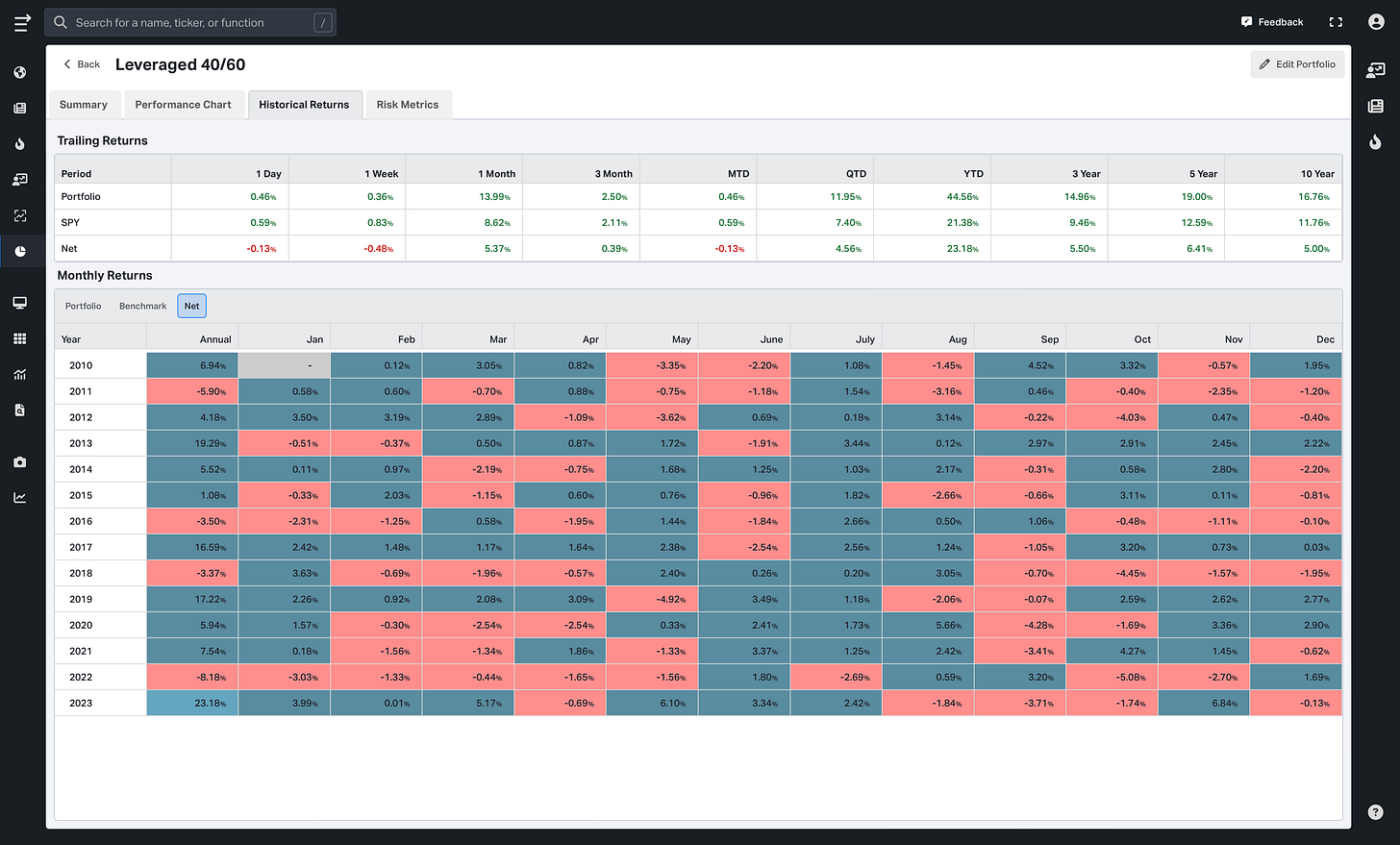We have long wondered how we can achieve similar returns with lower risk against the S&P 500, or higher return with similar risk. It has come to our attention that this can be accomplished through the use of leveraged products with a substantial allocation to cash-equivalents. Hopefully, this is where the combination of risk-averseness and high-returns can meet.
Of course, you can increase or decrease the allocation to equities as desired, which will in turn affect the risk-return relationship.
The following has been done using a very intuitive tool called Model Portfolios on Koyfin.
Same Return, Lower Risk
70% allocation to BIL (1-3 Month Treasury Bills)
15% allocation to TQQQ (Triple-Leveraged Nasdaq)
15% allocation to UPRO (Triple-Leveraged S&P 500)
Rebalanced Annually
This has resulted in:
Higher returns;
Beta less than 1.00;
Same downside capture, higher upside capture;
Lower max drawdown; and, most importantly,
Large allocation to cash-equivalents
Point 5 is a very important one, because you can actually use the large cash availability to your advantage by reallocating aggressively when stocks are down.
Higher Return, Similar Risk
60% allocation to BIL
20% allocation to TQQQ
20% allocation to UPRO
Rebalanced Annually
This has resulted in:
Higher returns;
Higher Calmar ratio;
Similar max drawdown;
Better skewness and excess kurtosis; and,
Large allocation to cash-equivalents











